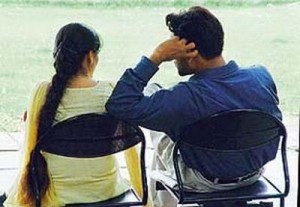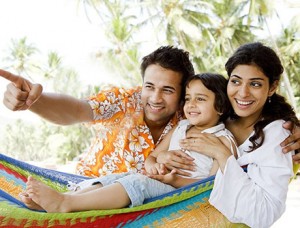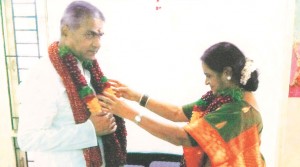In this blog post, Srishti Khindaria, a student of Amity Law School, Delhi, Guru Gobind Singh Indraprastha University, analyses how live-in relationships have slowly crept into Indian societies and traces its roots back through the various annals of history. Such relationships which have usually been considered a western phenomenon are now fairly common, especially in metros and have also gained legal backing in light of certain Supreme Court Judgments in their favor. We also take a look at an emerging trend in parts of Southern India where live-in relationships are seen amongst the elderly.
In Indian society, where marriage is considered an eternal and sacramental union, live-in relationships are becoming more and more prevalent in the present times. With Urban India becoming more broad and open minded and an obvious Western influence that is gradually increasing along a greater number of students moving out of their homes at an early age to pursue further education, live-in relationships are increasing day-by-day, especially in metropolitan areas.
Such relationships are considered to be convenient, “forward-looking” and free of legal hassles by the younger generation, but in reality, they do sometimes turn to be extremely tricky. It is true, that if a man and women are deeply in love, they might not need a socio-legal-religious sanction, but this is too ideal or utopian a concept. The state of things, as they exist is quite different; such couples might have fights, differences of opinion, change of career paths or break-ups; they may also have children together and earlier the status of such children or the property such couples owned together during their period of cohabitation was unascertained. Such relationships are also viewed as morally and socially improper.[1]
“Live-in relationships” is a relatively new term in the Indian domain, but its context can be traced back to ancient times. The Vedas, mention eight types of vivaahs or marriages, one of which is the Gandharva Vivaah; in which the man and woman mutually consent to marriage. Such a marriage involved neither the families of the couple nor a particular ritual or any practice to solemnize the marriage. It was a mere word of mouth commitment. Although the couple was united using Gandharva Vivaah, their responsibility and commitment were seen to be identical to any of the other types of marriages as ordained in the traditional texts. There was also the concept of “mail tray karars” where two people of the opposite sex would enter into a written agreement to live together and look after each other.
 In earlier times, the “unmarried couple status” did exist, but it was not so popular. With the number of such relationships steadily increasing, it has compelled the Supreme Court to take up the matter seriously. Recent developments in society have provided for grounds to discuss the effects and pertinence of such relationships and the impact they shall have on our society. In Hinduism marriage is defined as an “indissoluble union of flesh with flesh, bone with bone and to be continued even in the next world.” Thus, legal sanctions to the institution of live-in relationships—which evidently lack the aspects of a “traditional Hindu marriage”—helps gives some recognition to such unions, and possibly pave the way for concrete legislations too.
In earlier times, the “unmarried couple status” did exist, but it was not so popular. With the number of such relationships steadily increasing, it has compelled the Supreme Court to take up the matter seriously. Recent developments in society have provided for grounds to discuss the effects and pertinence of such relationships and the impact they shall have on our society. In Hinduism marriage is defined as an “indissoluble union of flesh with flesh, bone with bone and to be continued even in the next world.” Thus, legal sanctions to the institution of live-in relationships—which evidently lack the aspects of a “traditional Hindu marriage”—helps gives some recognition to such unions, and possibly pave the way for concrete legislations too.
Emphasizing that law should evolve according to changing times, the Supreme Court held that live-in relationships have now become an acceptable norm in society and are not considered taboo or a prohibited relationship anymore.
The Supreme Court has over the years given recognition to live-in relationships and recently held that if a man and woman have “lived like a husband and wife” for a long duration, then the judiciary would presume that they were married and that the woman would be eligible—after the death of her partner—to inherit his property.
Some Legal Provisions Regarding Live-in Relationships
Protection of Women from Domestic Violence Act, 2005
The Protection of Women from Domestic Violence Act, 2005, offers some traces of assistance to the rights of women in such relationships. The 2005 Act, covers under its ambit “relationships similar to marriage” or live-in relationships. The definition of “domestic relationships” as defined under section 2(f) is as follows—
“Relationship between two persons who live or have, at any point of time, lived together in a shared household when they are related by consanguinity, marriage, or through a relationship like marriage, adoption or are family members living together as a joint family.”
Hence, the words of the act are self- explanatory and within its meaning include the concept of a live-in relationship.
The Maharashtra Government Proposal, 2008
In October 2008, the Maharashtra Government approved a proposal suggesting that a woman involved in a live-in relationship for a “reasonable period”—such period to be determined by the facts and circumstances of each case—should receive the status of a wife.
Recommendation of the National Commission for Women, 2008
A recommendation was made by the National Commission for Women in 2008 to the Ministry of Women and Child Development to (or “intending to”) bring in harmony the laws dealing with protection of women from domestic violence and also to put the status of live-in couples at par with that of legally married couples.
The recommendations of the committee included that the definition of “wife” as under Section 125 of Code of Criminal Procedure must be enlarged to include women in live-in relationships too.
Justice Malimath Committee or Committee on Reforms of Criminal Justice Report
A committee set up under Justice V. S. Malimath observed that if a man and a woman are living together as husband and wife for a reasonably long period, the man shall be deemed to have married the woman.”
The Justice V.S. Malimath Committee further went on to suggest that the word “wife” as enshrined under CrPC be amended to include “a woman living with the man as his wife” so that even a woman in a live-in relationship would be entitled to alimony.
Status of Children of Couples in Live-In Relationships
As of now, there are no specific laws that recognize the status of couples in live-in relationships. Therefore, the law as to the status of children born to couples in live-in relationships is also extremely uncertain.
Under the Hindu Marriage Act, 1955, every child whether born out of the void, voidable or legal marriage, gets the status of legitimacy; however there is still no specific law that gives any proper status of legitimacy to children born out of the union of a live-in relationship. The future of such children becomes highly uncertain and insecure in case the partners terminate their relationship. There is an eminent need to provide a safeguard for the rights of such children. Provisions must be made to safeguard their future and to ensure that they inherit property from both their parents
In the absence of any such legislation, the Supreme Court ruled that a child born out of a live-in relationship may be allowed to inherit the property of his/her parents but in a case of Hindu hereditary ancestral property, they may not have any claim.[2]
Live-In Relationships amongst the Elderly: An Emerging Trend
Thodu Needa, is an agency, to help widowed or single elderly men and women find a suitable companion for themselves during their old age. The agency was set up by M Rajeswari, a retired school teacher, in Andhra Pradesh.
Since it began operations in December 2010, Rajeswari through Thodu Needa has helped pave the way for nearly 200 couples of over 50 years of age finding a match.
What is extremely interesting about such couples though is that 95 percent of them, including Rajeswari and Rao, have rather than formal weddings opted for live-in relationships.
In a joint report by Help Age International and United Nations Population Fund (UNFPA) released in 2012, it was stated that by 2050, India and China would house about 80 percent of the world’s elderly population[3]. Currently, about 12% of India’s population is over the age of 60. The lifespan of an average individual has also increased with a significant advancement in the standards of healthcare. And after the loss of spouse and retirement, a large number of the elderly are finding themselves with too much time at hand and not too many people to turn to, especially with their kids moving out and starting families of their own. Therefore, such relationships provide the elderly with some relief.
Concluding Remarks
Live-in relationships—especially among the urban, educated, middle class—can be seen as a “declaration of independence,” it is also viewed as a manner of keeping away from the constraints of marriage and can be seen as a “willful rejection of the institution of marriage.” Thus, it is essential to recognize the rights of such couples while making sure it does not hinder or undermine the institution of marriage.
Further, the myth that live-in relationships lead to bad marriages needs to be debunked; in fact, cohabitation acts as a “firewall” and couples who have lived together before getting married could help in lowering divorce rates, as suggested by current research studies. [4]
International studies, by the Office for National Statistics (ONS), said that cohabitation could be seen as promoting, rather than competing with marriage. However, over-dependence on statistics could be deceiving in a multi-cultural land like India.
The steps taken by the judiciary are pragmatic in approach and a welcome step towards social acceptance of live-in relationships. Live-in relationships do provide individual freedom, but laws are essential to cut back its disadvantages, due to the insecurities it carries with it.
[divider]
Footnotes:
[1] http://www.legalservicesindia.com/article/article/live-in-relationship-in-a-marriage-centric-india-1618-1.html
[2] Bharata Matha & Ors. vs. R. Vijaya Renganathan; AIR 2010 SC 2685
[3] http://indianexpress.com/article/lifestyle/feelings/no-strings-attached-why-elderly-indians-are-getting-into-live-in-relationships/
[4] http://archive.indianexpress.com/news/livein-relationships-behind-falling-divorce-rates-study/851231/












